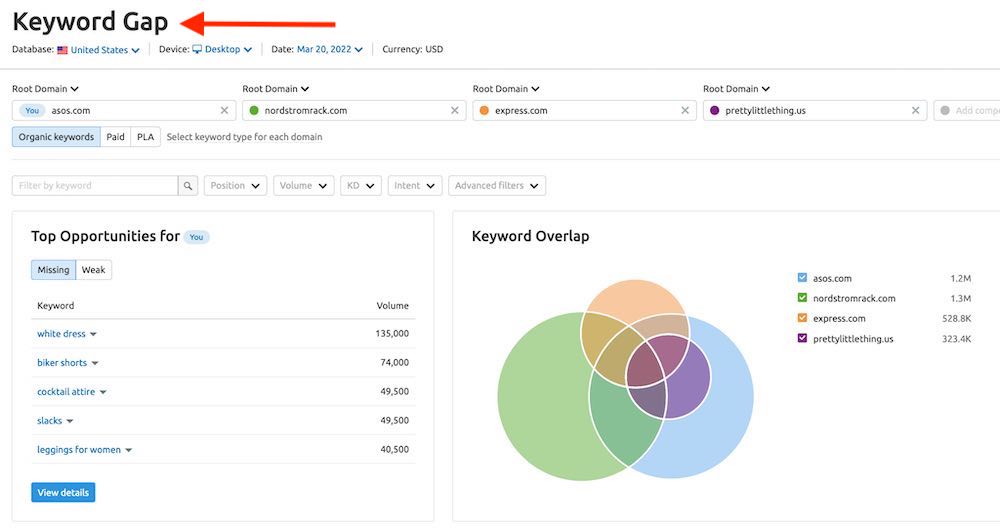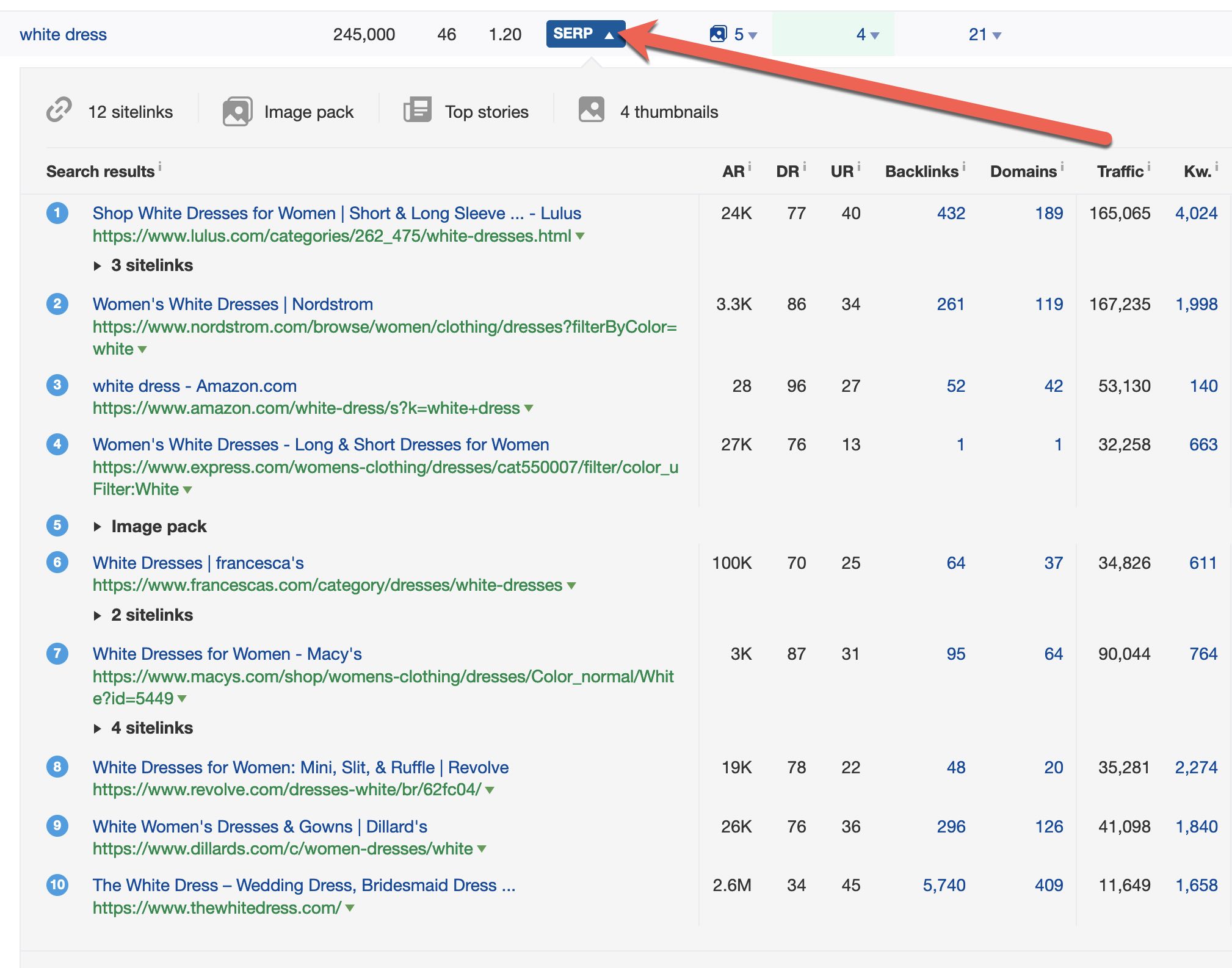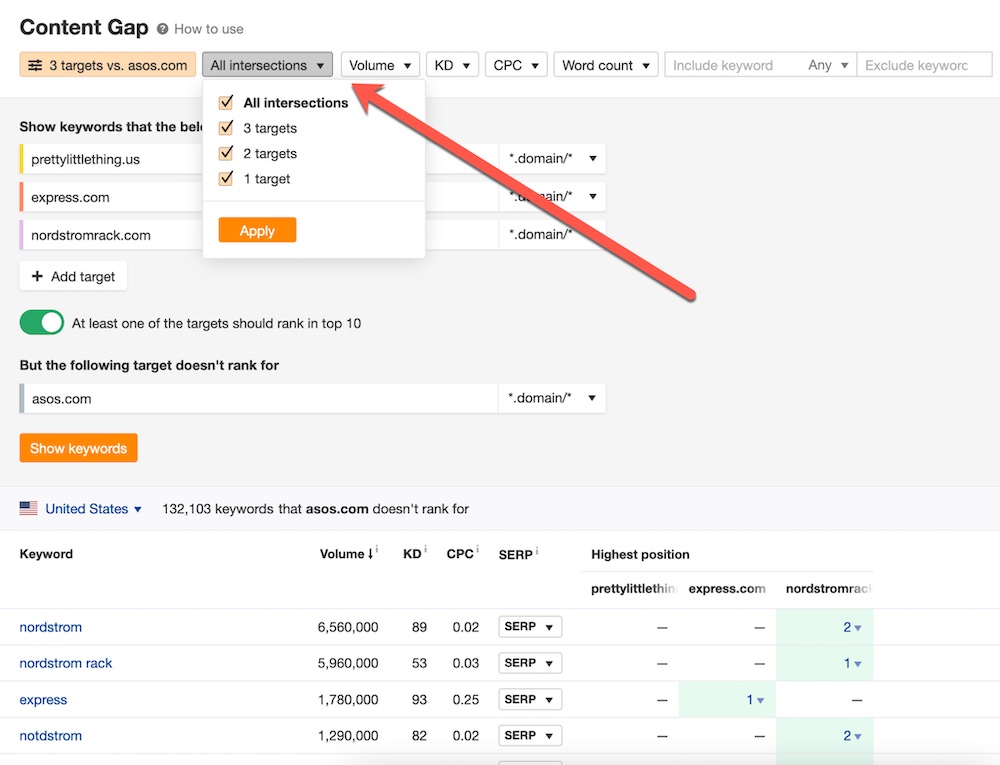Keyword gap analysis for search engine optimization identifies opportunities — queries that your site does not rank for or ranks poorly. It can help ensure your products and related info appear prominently in organic results.
The process is sometimes called “content analysis,” but the latter is a broader tactic that includes identifying missing pages such as FAQs and missing steps in the sales funnel — as well as keyword gaps.
Tools
The quickest way to identify keyword gaps is finding search queries your direct competitors rank for, and you do not.
Two premium tools, Semrush and Ahrefs, make keyword gap analysis easy. A free tool, The Hoth, is helpful but with limited features.
Semrush analyzes keywords for organic and paid search. Enter your domain or subdomain and up to five competitors’. The more competitors you enter, the more opportunities Semrush uncovers, providing a list of “Top Opportunities” and a Venn diagram for “Keyword Overlap.”

Semrush’s Keyword Gap tool lists “Top Opportunities” and includes a Venn diagram for “Keyword Overlap.”
The report includes sorting and filtering options, such as:
- By rankings (“Missing,” “Weak”)
- Keyword difficulty.
- Searchers’ intent (informational, commercial).
You can also compare rankings on a domain or URL level. The latter is helpful for multi-niche businesses with competitors in each.
Ahrefs’ keyword gap analysis works similarly to Semrush — search by domain, subdomain, directory, or URL.
My favorite Ahrefs feature is selecting the number of keyword overlaps with competitors. For example, you could enter 10 competing domains or URLs and see the queries that three of them rank for and you don’t.
You can also filter queries by a common word or exclude opportunities that include a word. It’s handy for searching for opportunities in a category.
Ahrefs also analyzes search result pages, which is a huge time saver. It shows the Google results for your target query, including how many domains link to each URL and the estimated organic traffic of each.

Ahrefs analysis of search result pages shows the Google results for a target query (“white dress” in this example), including how many domains link to each URL and the estimated organic traffic of each.
The Hoth is a free tool that works with data from Semrush for a basic keyword gap report. The report includes only the search volume and cost per click for each keyword you are not ranking for. The report is downloadable as a CSV file to import into a spreadsheet and then sort by a base term or the number of overlaps.
Using the Data
How do you choose which keyword opportunities to focus on?
Consider:
- Search volume of that query. I look at keyword difficulty, too.
- Search intent, such as informational or commercial. If the former, decide which type of content is best (blog post, how-to video).
If your page already targets the term, focus on why it underperforms. Further action may include updating the page and adding internal links to it.
However, keyword gap analysis is more than creating or updating content. It can identify poor website architecture and simple mistakes, such as inaccessible (to Google) navigation links.
Lastly, new sites with few ranking pages can use keyword gap analysis to see overlaps — and thus keyword priorities — among competitors.





